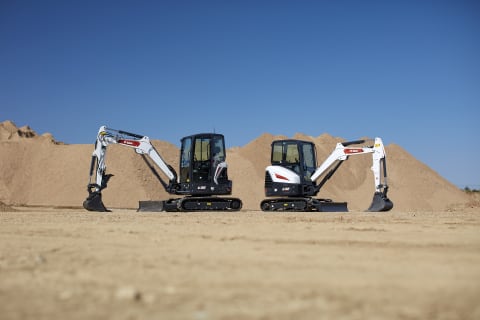- Home
- Buying Resources
- Excavators
- Compact (Mini) Excavator Buying Guide
- Compact Excavator Sizes and Specifications
Build Your Machine, Get a Free Price Quote
Customize your machine. Select the model, choose options, and submit to your local dealer for a free price quote.
Build & QuoteExploring Compact Excavator Sizes and Specifications
Compact (Mini) Excavator Buyer’s Guide: Part 2 of 6
Dig deeper into operating weights, horsepower, and more specifications to consider when choosing a compact (mini) excavator.
Table of Contents:
- Compact Excavator Sizes
- Weight Classes
- Large Excavators
- Battery-Powered (Electric)
- Diesel or Electric Power?
- Compact Excavator Specifications
- Dimensions
- Performance Specs
- Compact Excavator Arms
- Tail Swing Types
- Compact Excavator Engines
